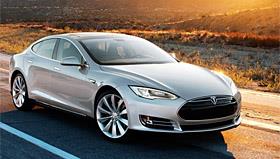As Tesla takes on The New York Times, its CEO could be leading a respectable discussion on battery technology. Instead, he's fueling an unnecessary fire.
 Few test drives turn into overnight sagas like the drawn-out battle that is Tesla versus The New York Times.
Few test drives turn into overnight sagas like the drawn-out battle that is Tesla versus The New York Times. On one hand, Tesla CEO Elon Musk has enough line graphs printed from his car’s onboard data box to feed a horde of lawyers, while reporter John Broder has a few “casual and imprecise notes.” But this spat is not simply a war of words, nor is the relevance of a major media outlet in question, as Road and Track so eloquently detailed. At stake is the perceived quality and reliability of a new product.
In recap: The New York Times publishes a review on Feb. 10 stating that its Model S test car, in a drive from New York to Boston, suffered range shortages in below-freezing weather and had to be towed. The following day, Musk tweets that the story is a “fake” and goes on CNBC Monday afternoon to dispute the story. The next day, Broder responds on the Times’ Wheels blog that the newspaper supports the story and writes that had he known then “what I know now about the car, its sensitivity to cold and additional ways to maximize range, I certainly would have treated the test differently.”
One day later, Musk writes a lengthy point-by-point critique, supported by charts and graphs, that appears to contradict each of Broder’s claims. On Valentine’s Day, Broder responds again, poking some holes into Musk’s claims. Then the media go back and forth, discovering the tow-truck driver was telling the truth and questioning the speed data Musk had cited. CNN successfully recreates Broder’s journey – as so do a handful of Model S owners – in the following days. Then on Tuesday, Musk responds again, this time to a blog post from the Times’ public editor Margaret Sullivan, who on Monday said in a headline that the test had “problems with precision and judgment.”
Admittedly, Broder could have studied how the car worked before setting out, something he did not dispute. Tesla employees assigned to assist Broder could have studied how the car worked, too, something Musk did not dispute. What’s odd is that Musk called Broder to tell him Tesla’s Supercharger stations should have been spaced in closer intervals to account for the Northeast’s more extreme weather – before blasting him on national television.
By now, you’ve formed your own opinions on the Times story. Here's mine: I haven’t bought Tesla’s explanations. And as a CEO, Musk’s behavior is intolerable and potentially damaging for his company’s future.


[>>>] Modifikasi Mobil Racing Ring 13
[>>>] Modifikasi Mobil Racing Ring 14
[>>>] Modifikasi Mobil Menggunakan Velg Hitec Racing
[>>>] Modifikasi Mobil Racing Menggunakan Velg ay179
[>>>] Modifikasi Mobil Racing R13X55H8ET15
[>>>] Cara Membaca Velg Ricing
[>>>] Tips Modifikasi Mobil
[>>>] Modifikasi Mobil Terios jadi 4WD
[>>>] Modifikasi Honda Jazz
[>>>] Toko Velg Mobil Time Attack, Tempatnya Jual Velg Bogor
[>>>] Modifikasi Mobil Avanza 2008
[>>>] Modifikasi Honda Civic Wonder
[>>>] Modifikasi Terios
[>>>] Modifikasi Mobil Paling Gila Di Dunia
[>>>] Seputar CIVIC WONDER
[>>>] Tips Mengganti Velg Mobil
[>>>] Cara Memilih Velg Mobil Yang Bagus
[>>>] Mobil Tampil Garang Dengan Velg Racing
[>>>] Modifikasi Mobil Racing Ring 15
[>>>] Modifikasi Mobil Racing Ring 16
[>>>] Modifikasi Mobil Racing Velg Ring 17
[>>>] Modifikasi Mobil Racing Velg Ring 18
[>>>] Modifikasi Mobil Racing Velg Ring 19
[>>>] Modifikasi Mobil Racing Velg Ring 20
[>>>] Modifikasi Mobil Racing Velg Ring 22